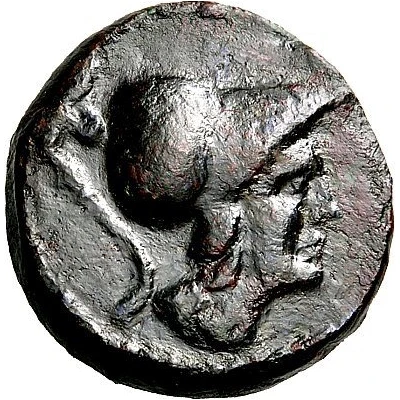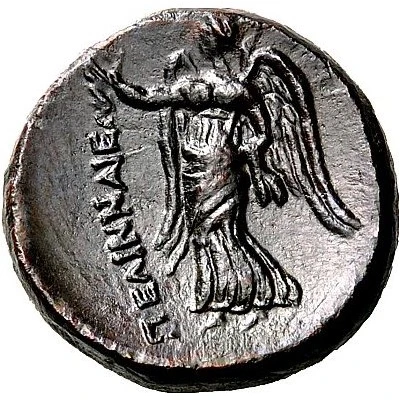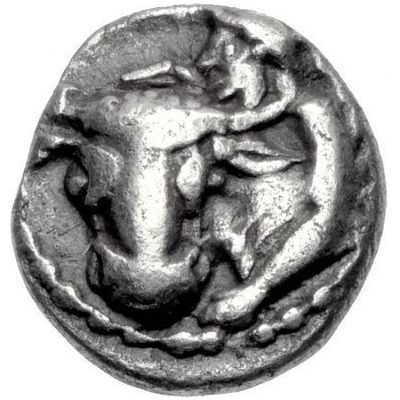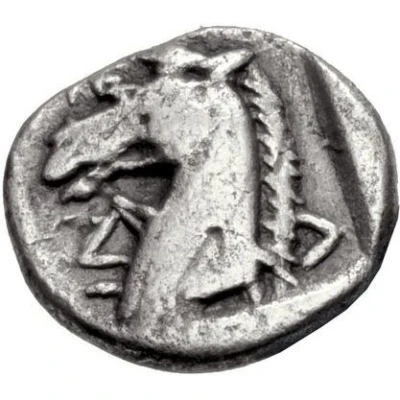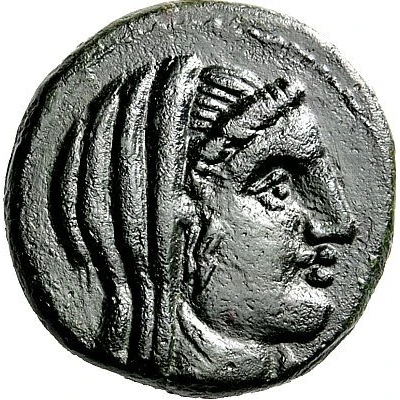
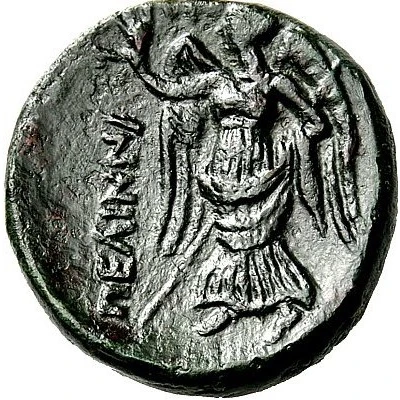

© Nomos AG
Tetrachalkon 200 BC - 150 BC
| Bronze | 7.0 g | 20 mm |
| Issuer | Pelinna (Thessaly) |
|---|---|
| Type | Standard circulation coin |
| Years | 200 BC - 150 BC |
| Value | Tetrachalkon (1⁄12) |
| Currency | Drachm |
| Composition | Bronze |
| Weight | 7.0 g |
| Diameter | 20 mm |
| Shape | Round (irregular) |
| Technique | Hammered |
| Demonetized | Yes |
| Updated | 2024-10-10 |
| Numista | N#170885 |
|---|---|
| Rarity index | 100% |
Reverse
Nike standing left, holding wreath in her upraised right hand and stylis in her left hand.
Script: Greek
Lettering: ΠΕΛΙΝΝΑ ΕΙΩΝ
Translation: The Pelinnaeians
Interesting fact
The Tetrachalkon coin was used in ancient Greece during the Hellenistic period, specifically in the city of Pelinna in Thessaly. The coin's name, Tetrachalkon, comes from the Greek words "tetra," meaning four, and "chalkos," meaning copper, referring to the coin's value, which was equivalent to four copper coins. This coin was made of bronze and weighed 7.0 grams, which was a significant weight for a coin at that time. The coin's design featured the head of Zeus on one side and a youthful Dionysus on the other, highlighting the importance of these deities in ancient Greek culture. Overall, the Tetrachalkon coin is a fascinating piece of history that provides insight into the economic and cultural practices of ancient Greece.
